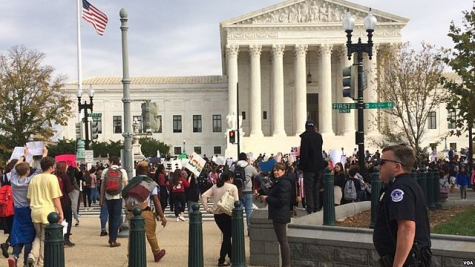Anti-Asian hate crimes continue to resurge year after year
March 7, 2022
Due to the COVID-19 pandemic, anti-Asian sentiment was at an all-time high in 2020. According to the Federal Bureau of Investigation (FBI), the year concluded with 279 hate crimes and thousands of hate incidents. Though the country is no longer in lockdown, reports of race-based hate crimes towards people of Asian descent have continued to stay high.
Every year since, a major case or spur of cases occurs. Such as an incident in 2020, a year marked by large amounts of attacks on Asian elders.
Although 2021 carried many smaller incidents as well, such as the Atlanta shootings, which was a largely discussed case. On April 15 at around 4:50 pm, Robert Aaron Long would shoot up the first of three salons in Atlanta, Georgia. He fled the scene for another, followed by another. During this afternoon, a total of eight people were murdered and one wounded. Out of the eight victims, six of them were of Asian descent. Major outrage sparked from the shooting; hundreds of news reports flooded national headlines, and people poured their hearts into donations and relief efforts. Randy Park, son of a shooting victim, even raised nearly $3 million.
Even less than two months into 2022, many different hate incidents have already been reported and a particular case has received much attention by the public eye. On Jan. 15, 40-year-old Michelle Go was pushed to her death in front of an oncoming train. According to police, Go was waiting for her train when 61-year-old Martial Simon shoved her from behind. Although Go was a person of Asian descent, it is arguable whether her attack was racially biased or not. Some believe Simon was just a violent person, while others, such as the New York City Police Department, believe it was a hate crime.
According to an interviewer from the New York Times, the NYPD stated “there was no indication that she had been targeted because of her ethnicity”. Nevertheless, countless other cases and incidents followed into the new year.
These listed examples are only a few out of hundreds and thousands of other incidents. Organizations such as Stop Asian American Pacific Islander (AAPI) Hate have helped counteract anti-Asian sentiments through methods such as donation relief funds and educational articles. A report from Stop AAPI Hate, who acted in collaboration with the National Asian Pacific American Women’s Forum (NAPAWF), detailed that women and girls experienced 2.2 times as many hate incidents as Asian men.
Sung Yeon Choimorrow, executive director for NAPAWF states, “I think it has to do with some of the stereotypes that exist about Asian American women. That we won’t fight back, that we are quiet and submissive, docile types. So that goes into the calculation of people who instigate these instances to pick on women, because the chances of us fighting back – in their head – is much less, that we are more vulnerable.”
Other authors of the Stop AAPI Hate study believe social media was the culprit for much of the publicity around these attacks. Numerous other factors contribute to anti-Asian sentiment, such as the usage of terms such as “Kung Flu” and “Chinese virus”.
The AAPI community has not been the only minority group to experience racially biased attacks due to fear and blame for disease. Angela Gover, Professor of Criminology and Criminal Justice from the University of Colorado in Denver led a study showing that this theme of using immigrant minorities as scapegoats is just a repeat from previous years. Examples include cholera, where Irish people were discriminated against, polio, with the blame on Italian immigrants, and tuberculosis, where Jewish people were a target for hate.
These resurgences have been a part of history for decades. Current Asian-American hate crimes and incidents are only continuing to spread, especially in cities such as San Francisco and New York as they house many AAPI people, Asian American people make up 35% of San Francisco residents alone. Organizations continue to conduct studies, and protesters continue to combat race-based violence.



